We started out at Angkor Thom, Andrew indulged me recreating a few pictures I took four years ago in the exact same broken archway of a wall in Bayon, before we meandered through Baphoun (it's a little on the boring side) through the Terrace of Elephants until we ended our first day at the temples at Ta Prohm, also known as the jungle temple, also known as the Tomb Raider temple. It's my favorite.

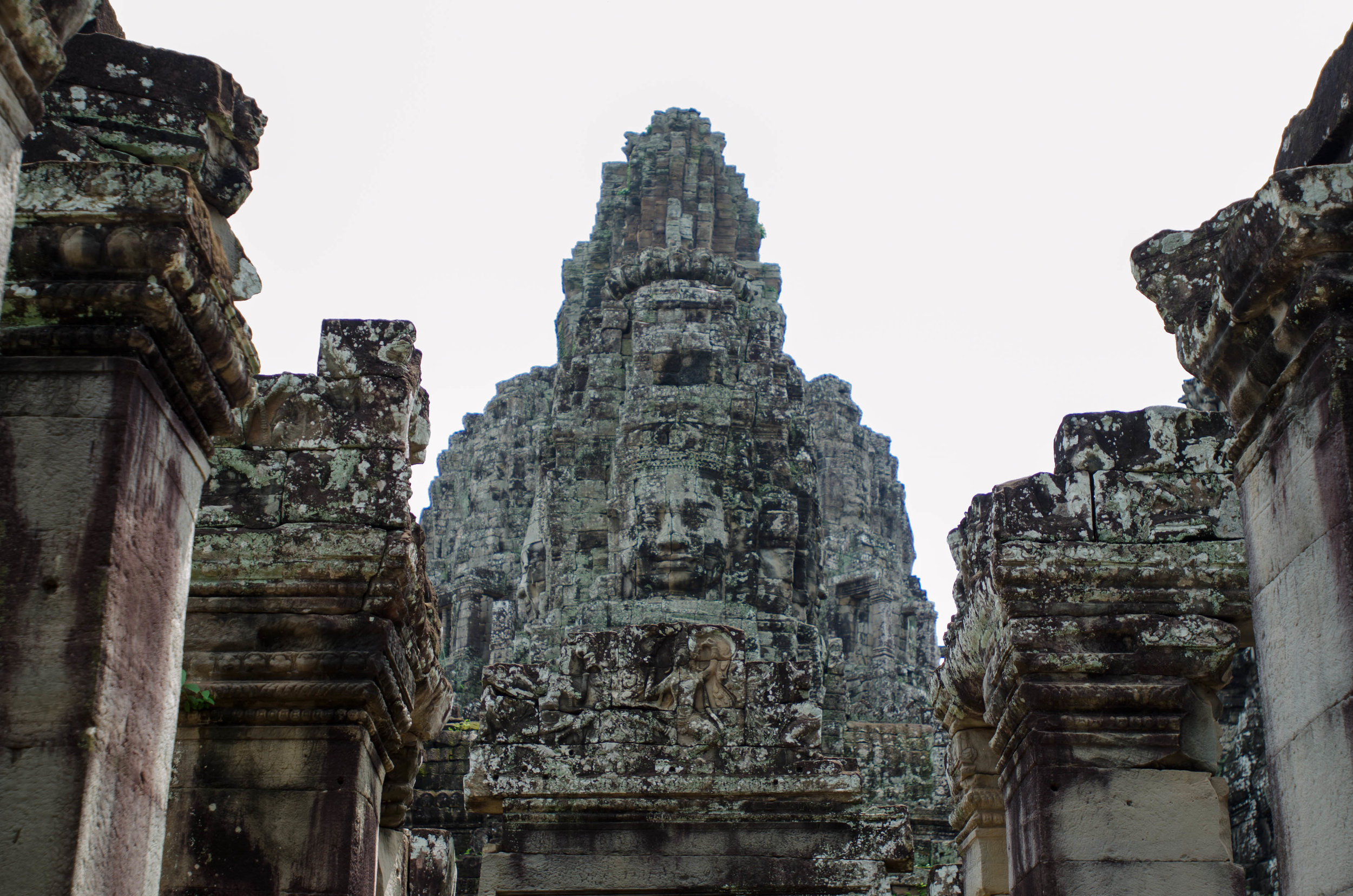

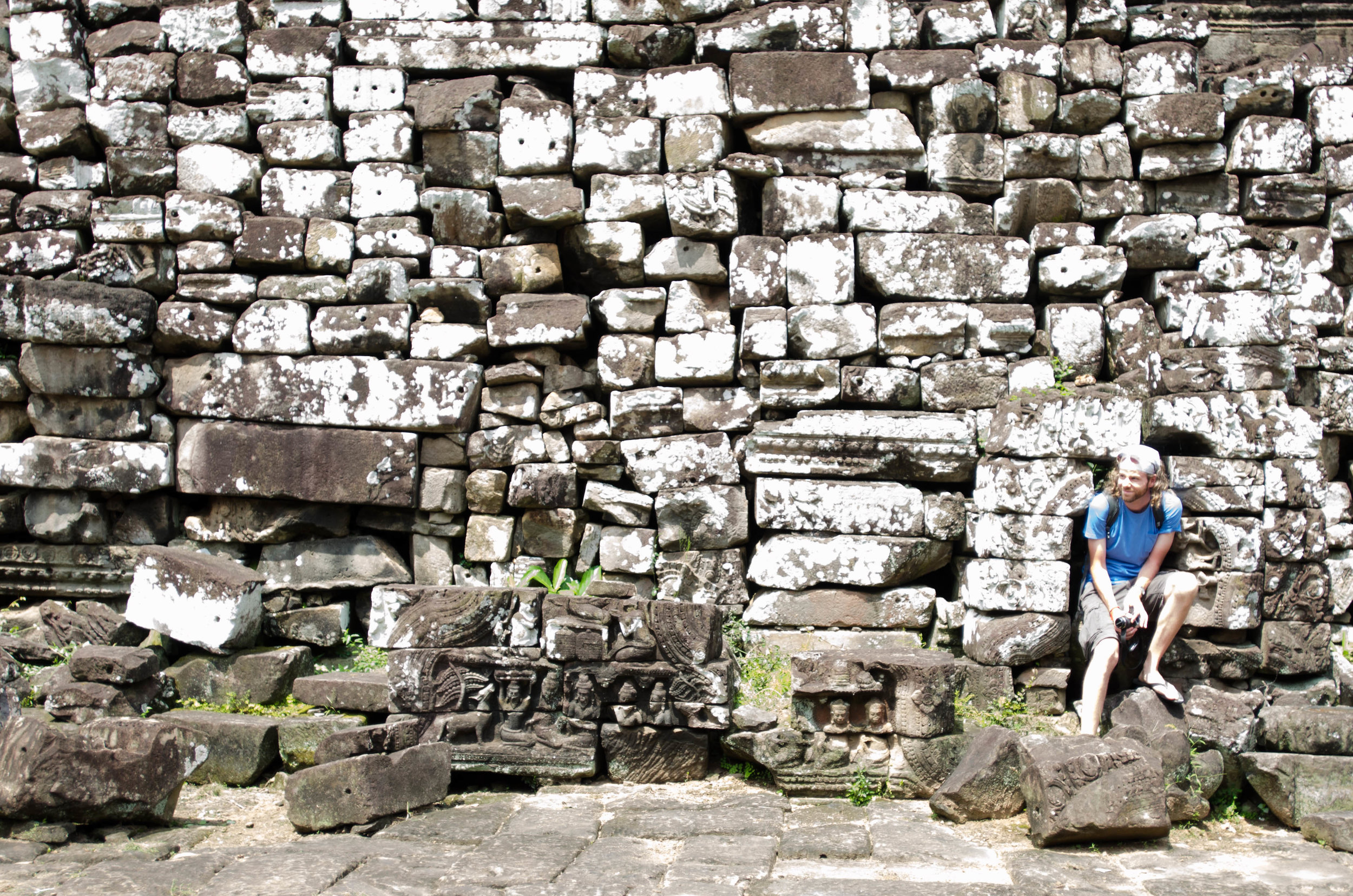
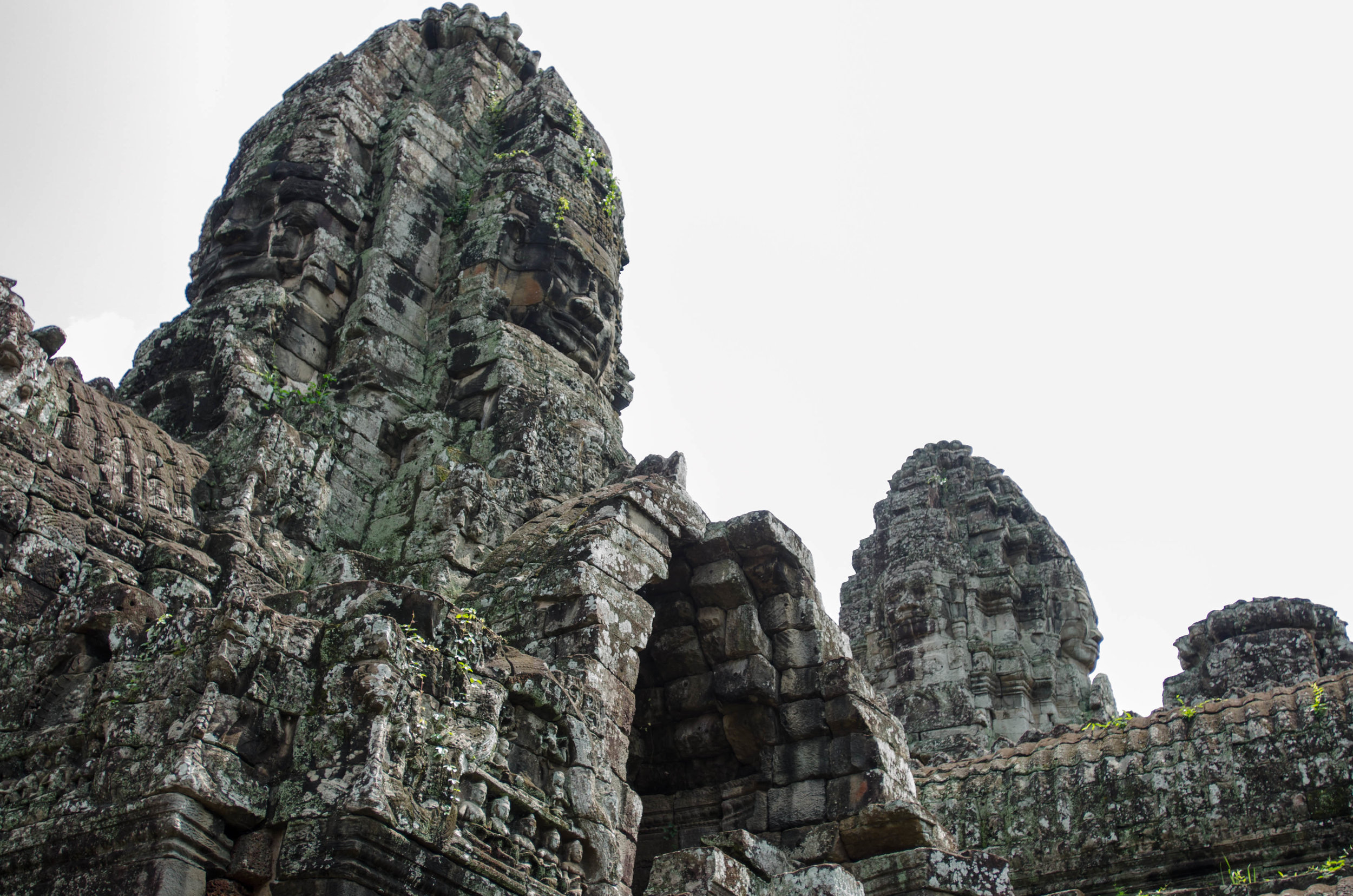

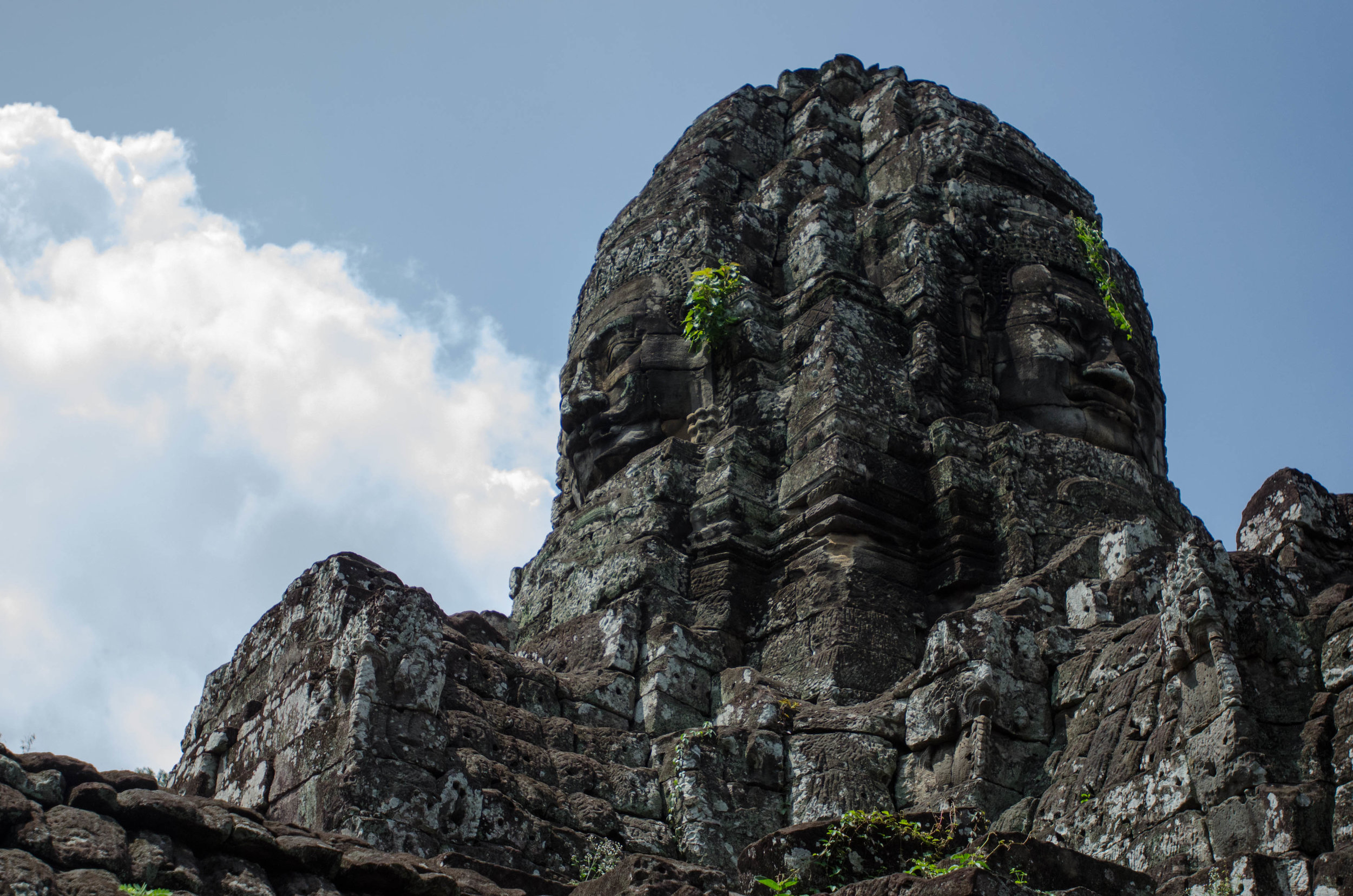
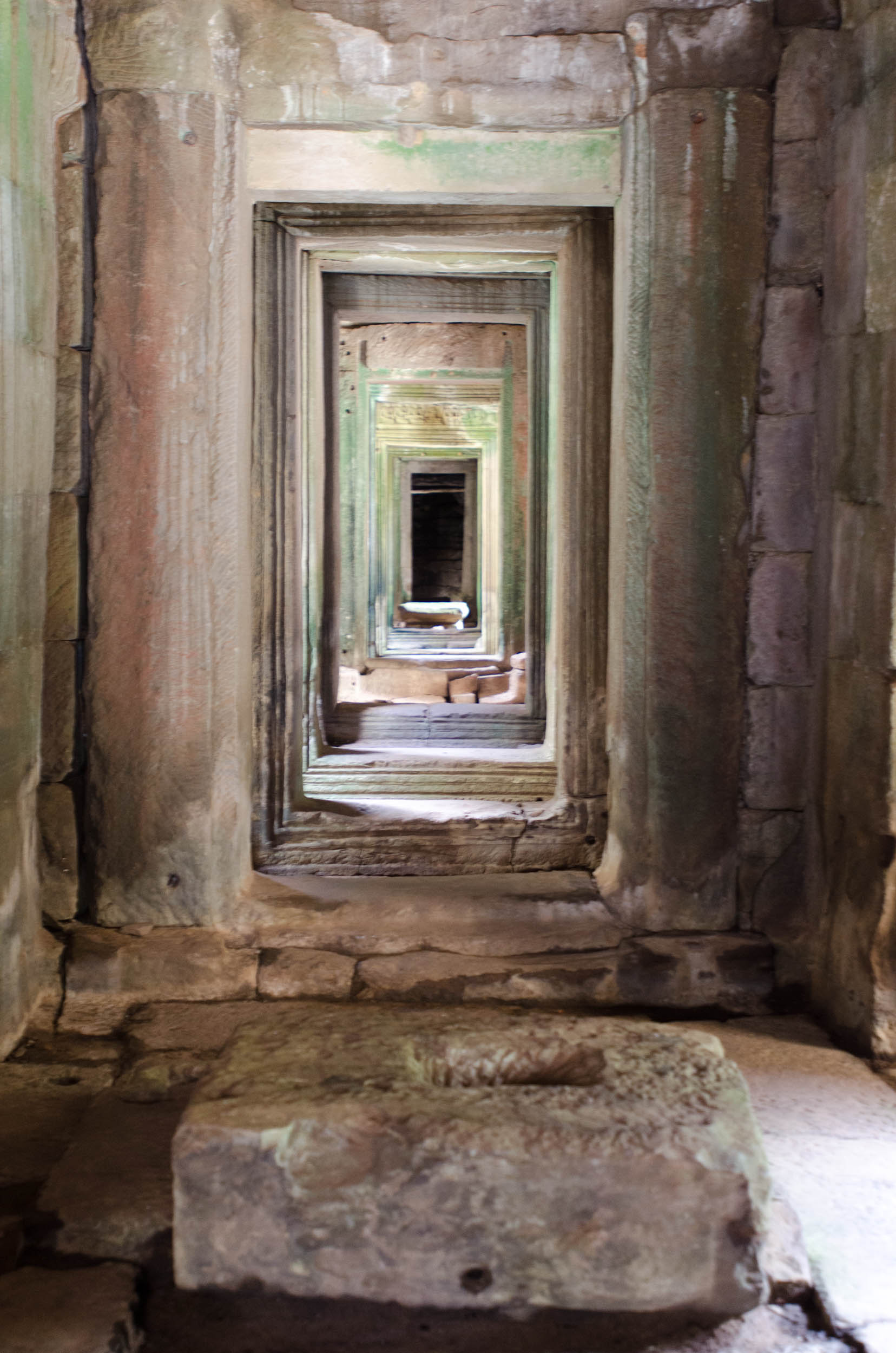

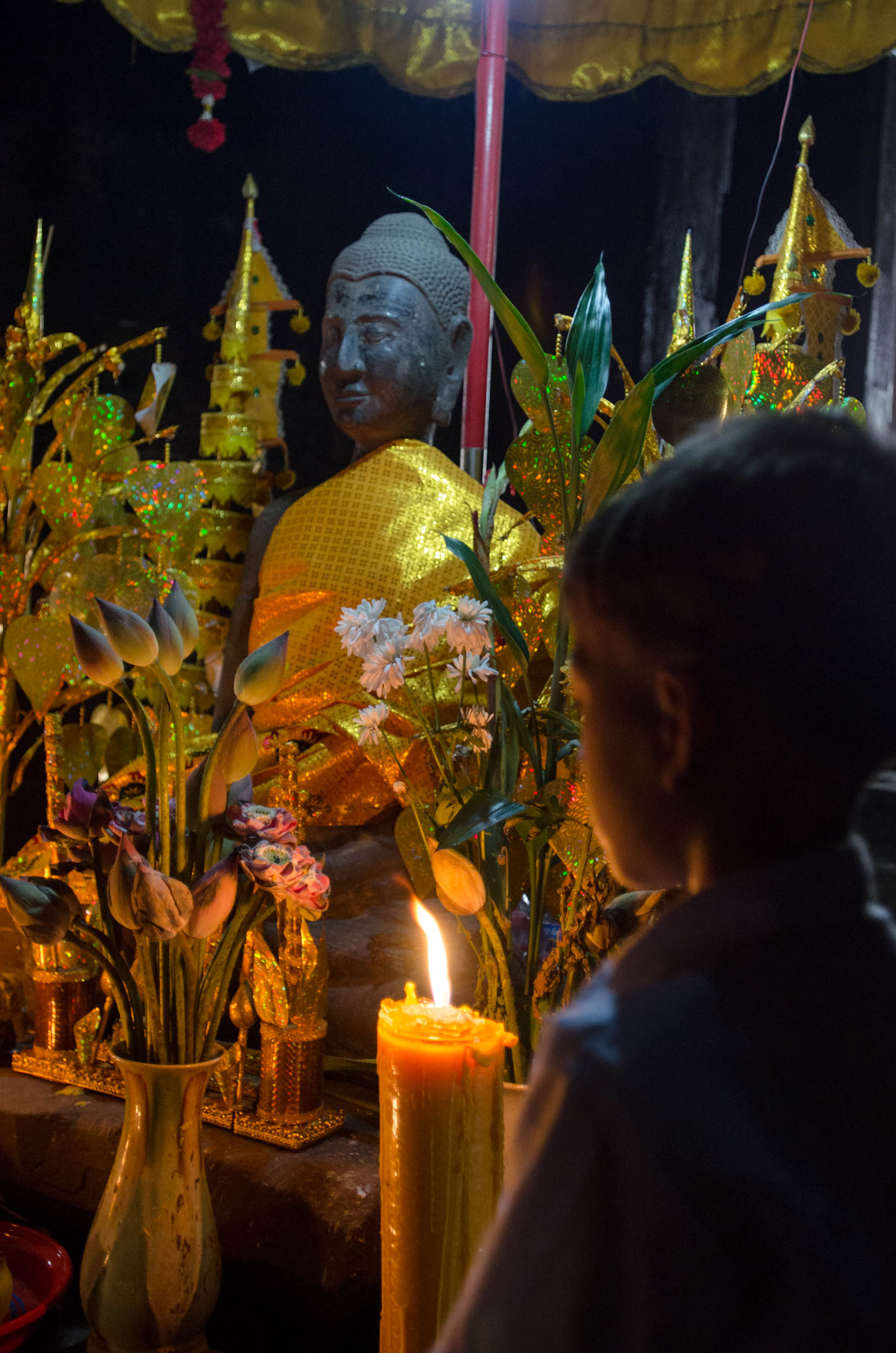
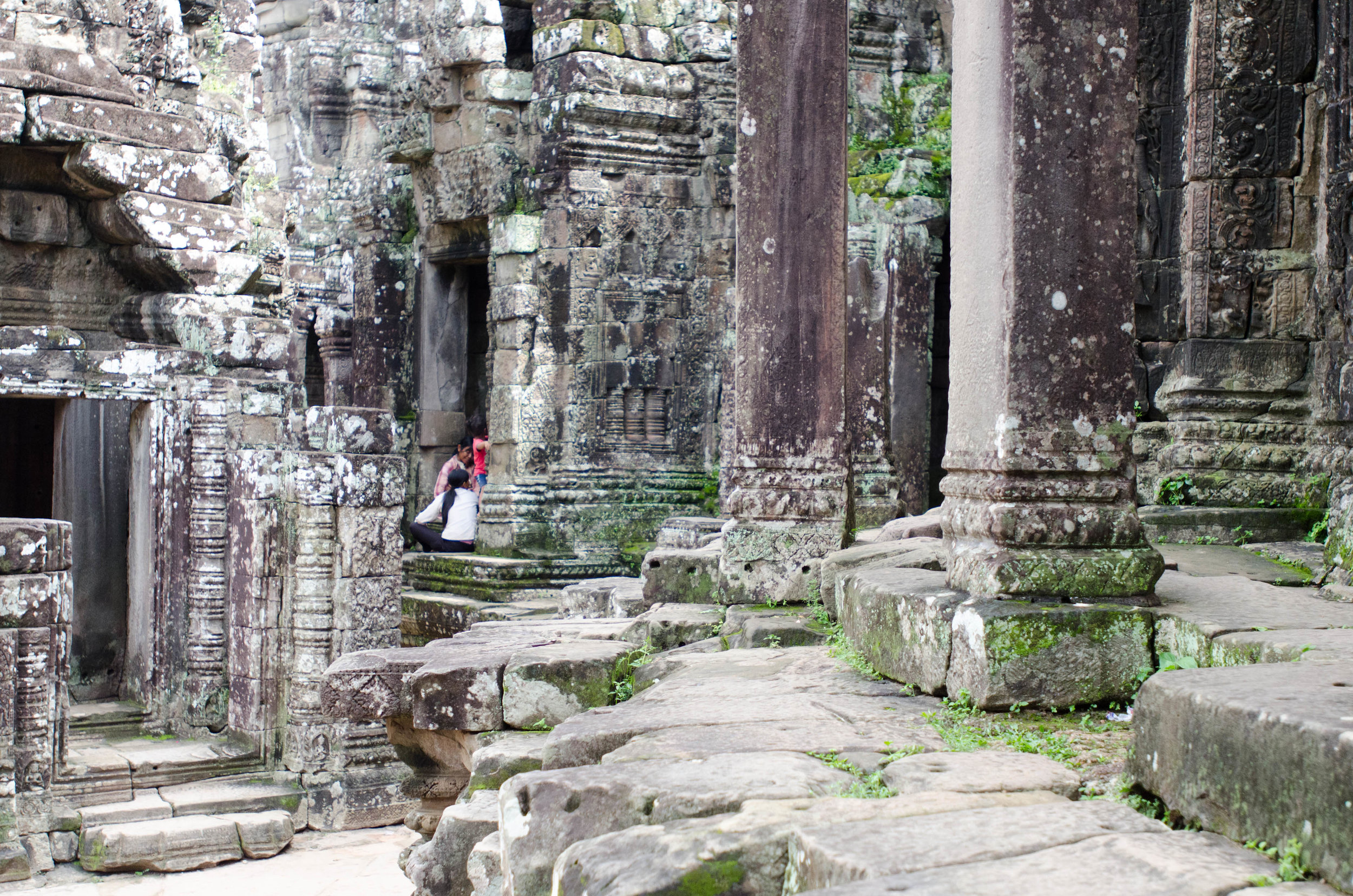
When I left Korea (for the first time) in 2008, I spent roughly 2 months traveling around S.E. Asia on my own. It was probably the most amazing experience of my entire life – that is up until what is already proving to be some stiff competition traveling around with Andrew right now! I met Jane in my first city, Hanoi and had a lovely time, mostly getting lost around the city. I was overjoyed when we met back up in Siem Reap, and then again in Chang Mai. Not only is it pretty awesome meeting so many new people as you travel, but it's exponentially better when you make plans to meet in a different city, or as sometimes happens, you run into each other randomly in a different country! Spending the day exploring the temples with Jane was really great, and by far so much less crowded than it was exploring with Andrew today! Regardless of the crowds, we managed to get some pretty fun pictures.
Angkor Thom means 'Great City' and survived more than any other Khmer city or temple during the Khmer Empire. It's impressive in a different way than Angkor Wat is. You drive over this bridge that is lined with huge giant faces, that are replicated on the gates and within the city and temple structures themselves.
Bayon, or Prasat Bayon is at the center of the city. Built by King Jayavarman VII, it was his official state Buddhist temple. After his death, subsequent kings changed the temple according to their own religious preferences- between Hindu and Buddhist. The faces of Bayon are thought to be Jayavarman himself, but I don't think that is a proven fact. It's interesting to me that everyone automatically thinks of Angkor Wat as the hero of the temples surrounding Siem Reap. While it is obviously impressive, I think Angkor Thom and Ta Prohm should be equally revered, perhaps for how different, yet equally impressive they are.
Because Bayon is a more compact temple, and the heat was maddening, we sat at the top for awhile in the shade of one of the many great faces. We chatted with a tour guide waiting for his tour of one who was taking pictures and laughed as he poked fun at the different nationalities of visitors to Siem Reap. His French accent was spot on, and his obvious disdain for Korean tourists was predictable. No offense Korea, but when you're in a big group traveling, you kinda act like you're still in Korea and everyone around you should readily understand and allow your ridiculous behavior. I'm talking to you ajjushi smoking IN A TEMPLE next to a NO SMOKING SIGN! (I almost yelled at him in Korean, but wasn't quite up for the 'ooohs and ahhhs' of a foreigner speaking Korean- outside of Korea nonetheless) We stopped outside of Baphoun to take a few (cheesy? yes please!) pictures!
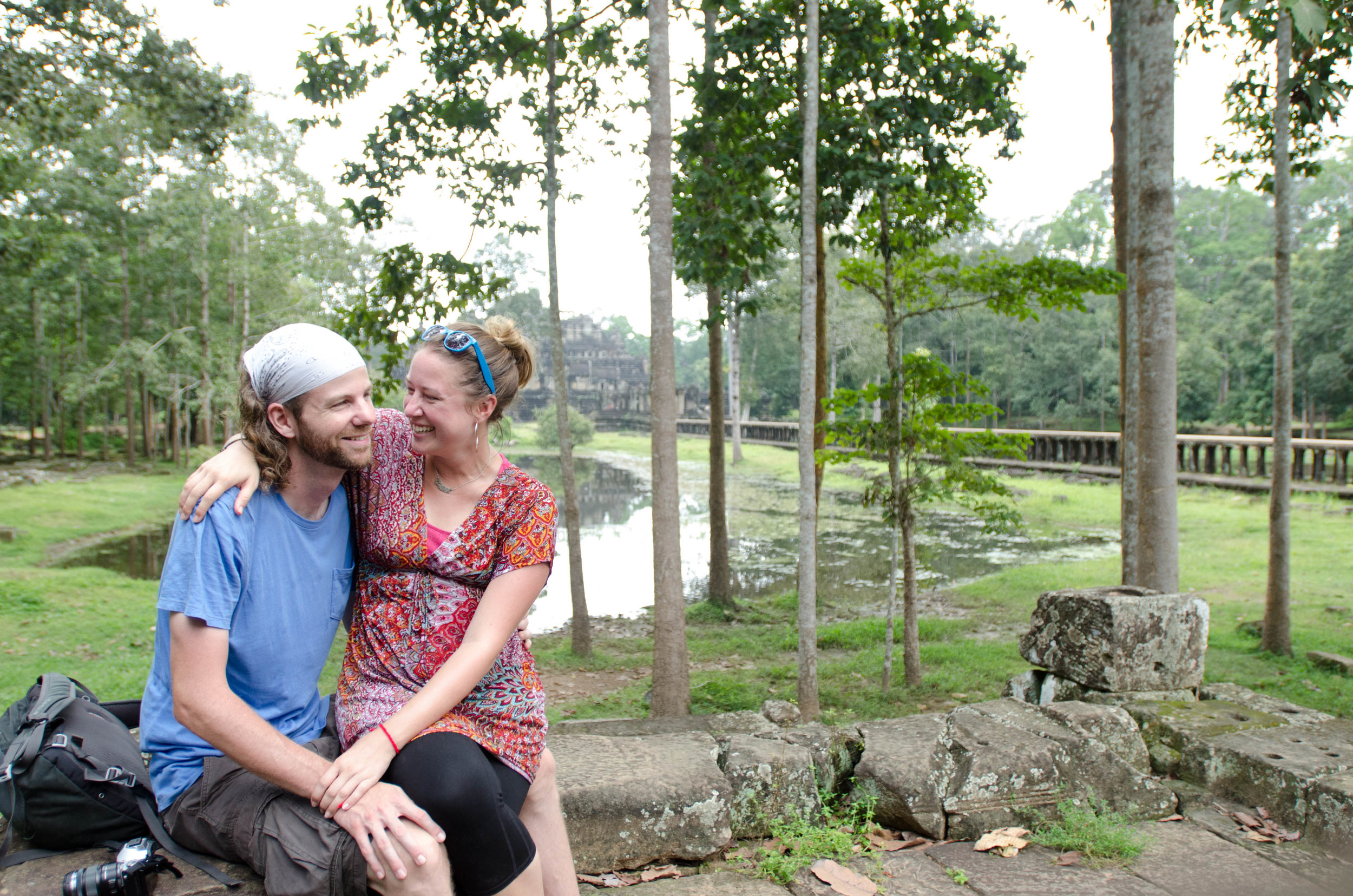
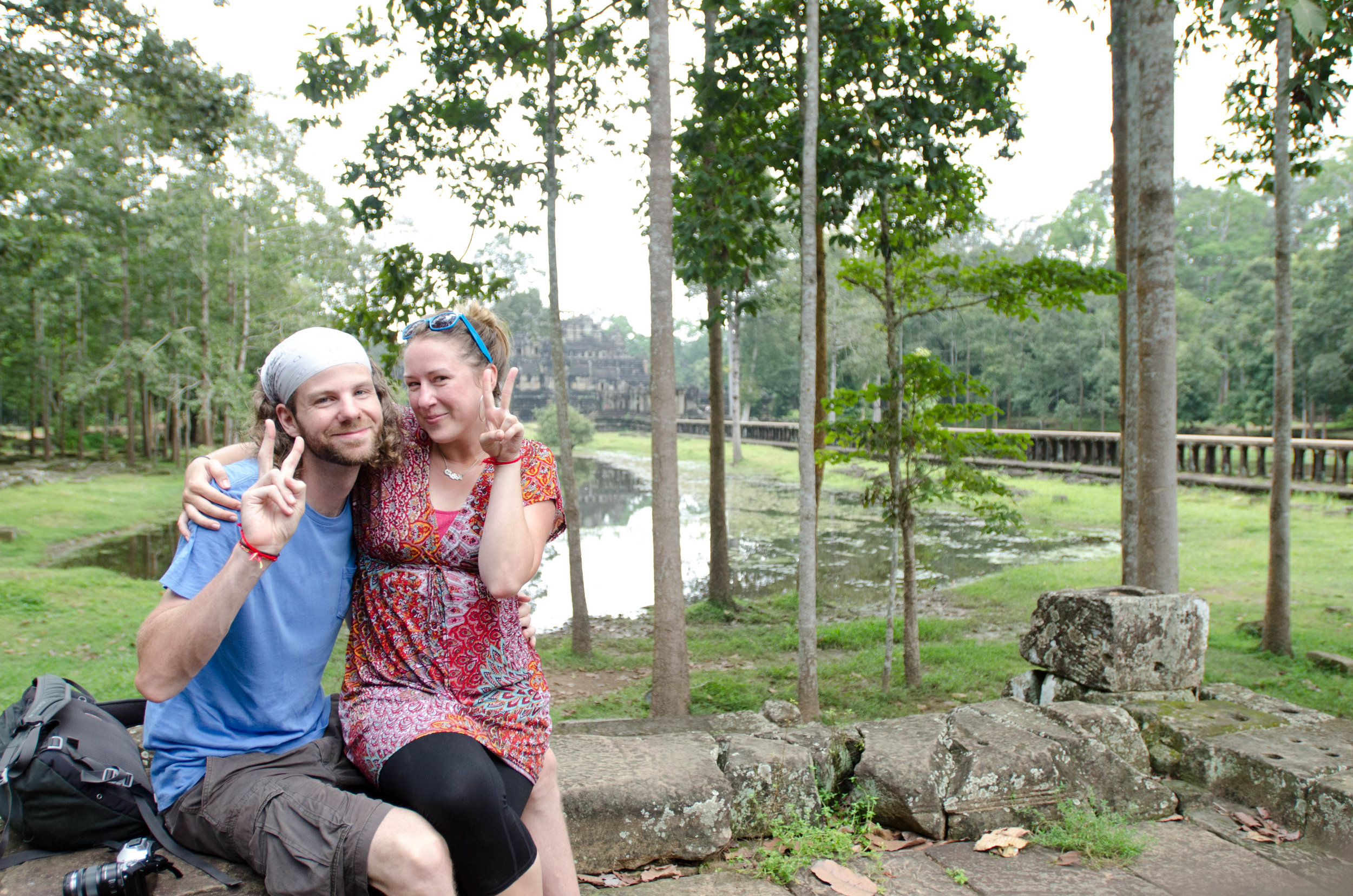
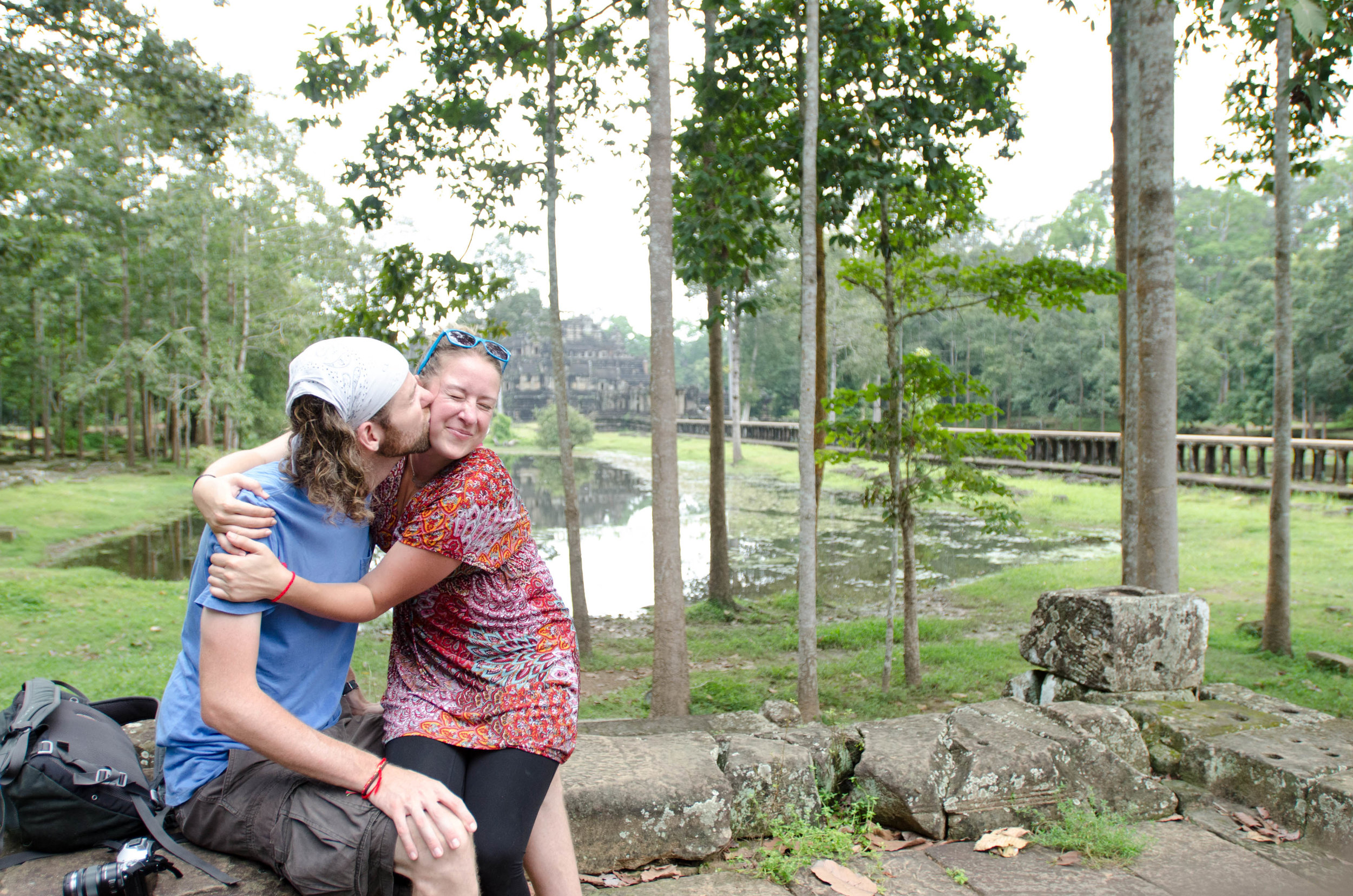
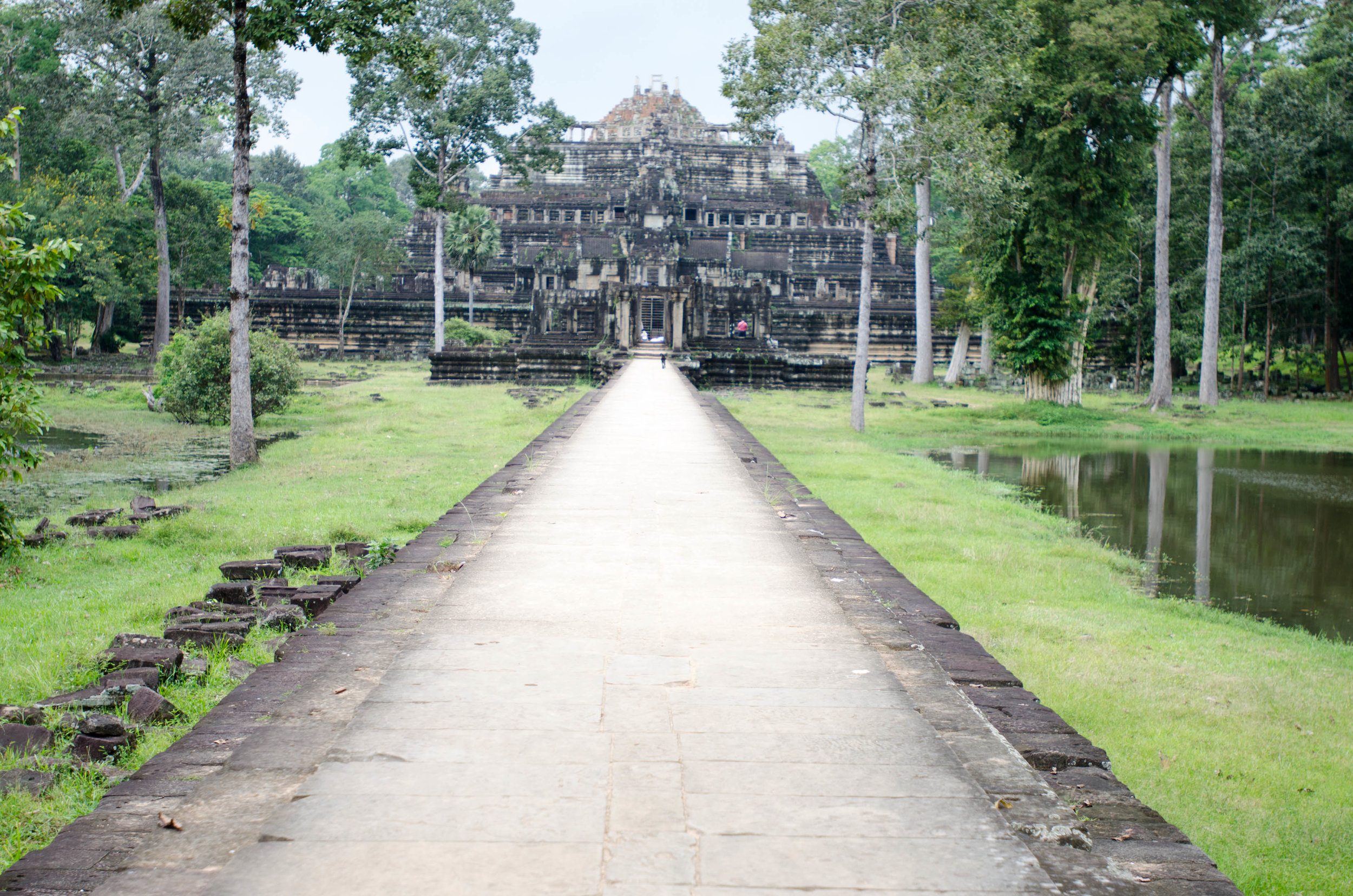
Baphoun is a Hindu temple inside of Angkor Thom. Baphoun can be summed up rather accurately as "a whole bunch of steep stairs." There used to be a reclining Buddha, but it wasn't there, and I'm not certain if anyone knows exactly why it isn't there now. It's suggested that because of the unstable land (apparently it was built on land filled sand) is the cause of parts of the temple collapsing.
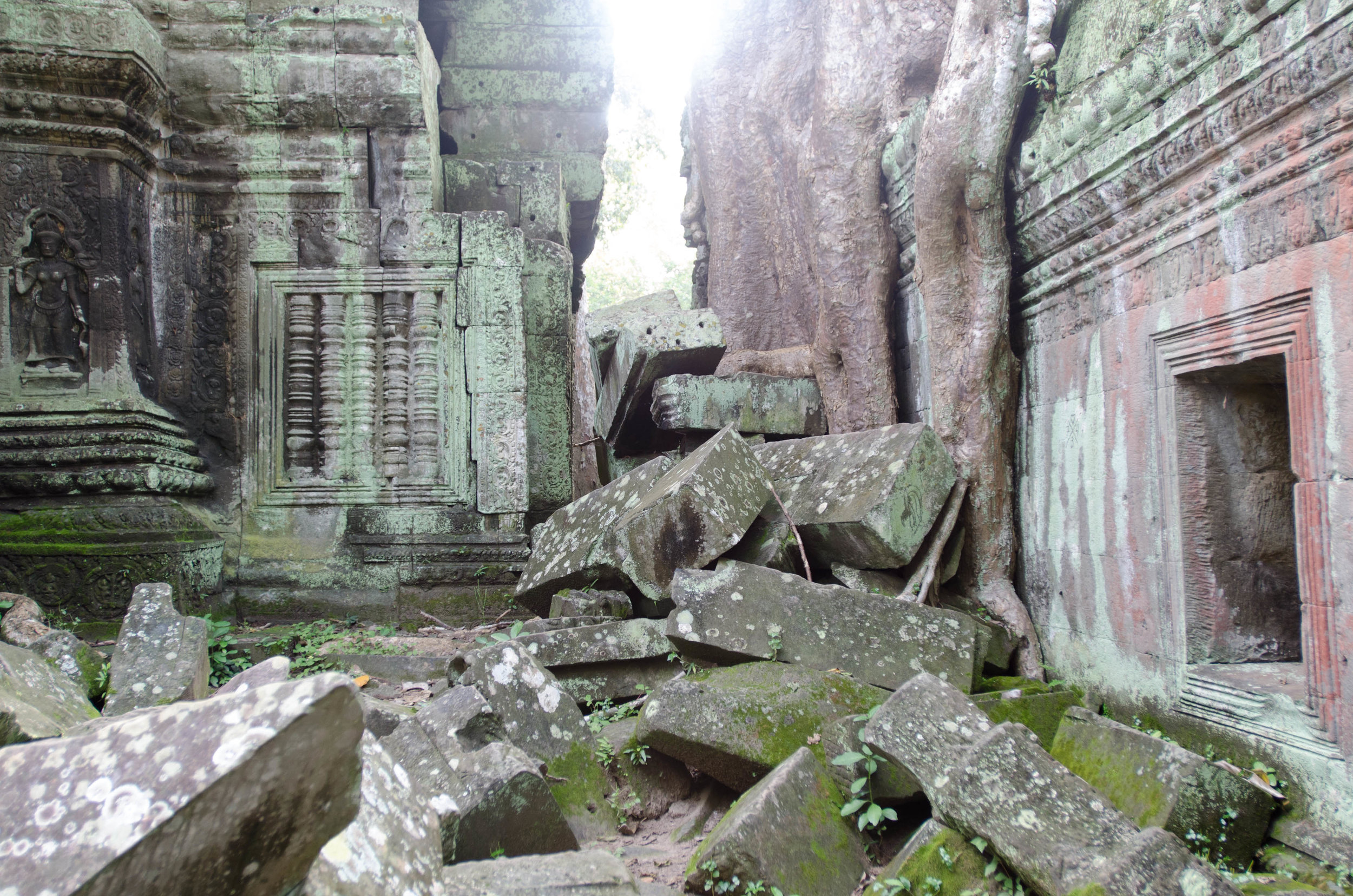
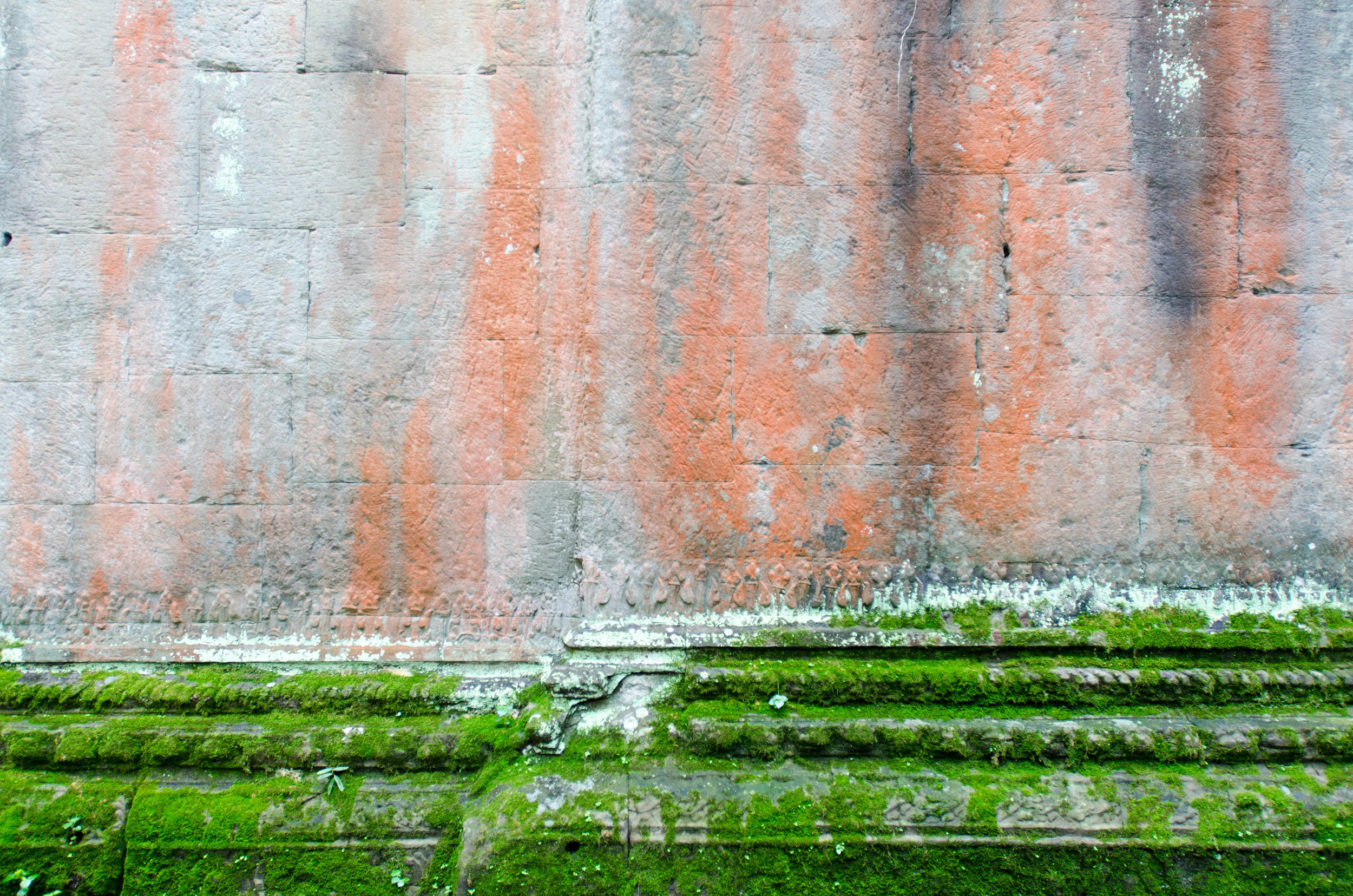

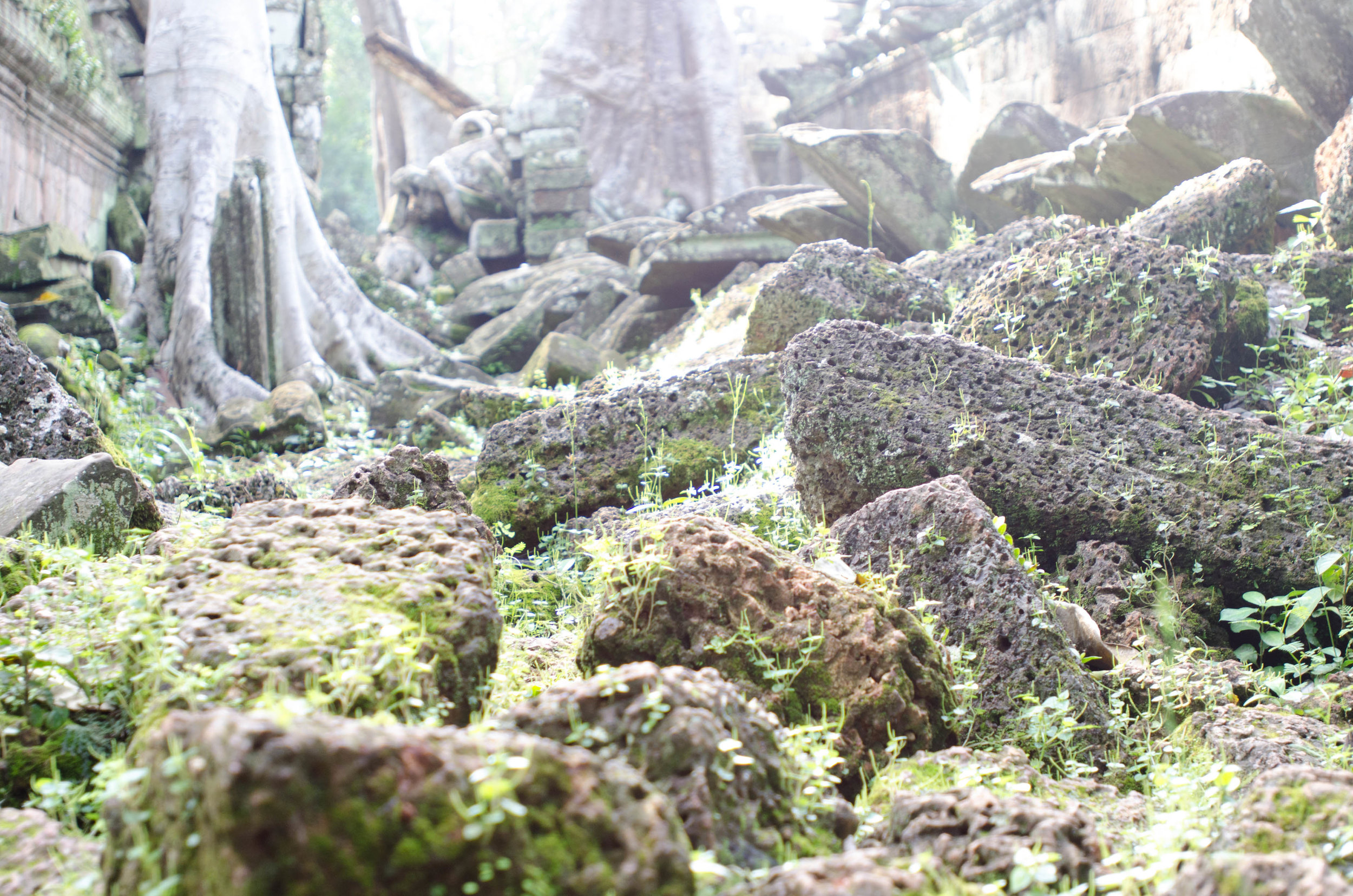

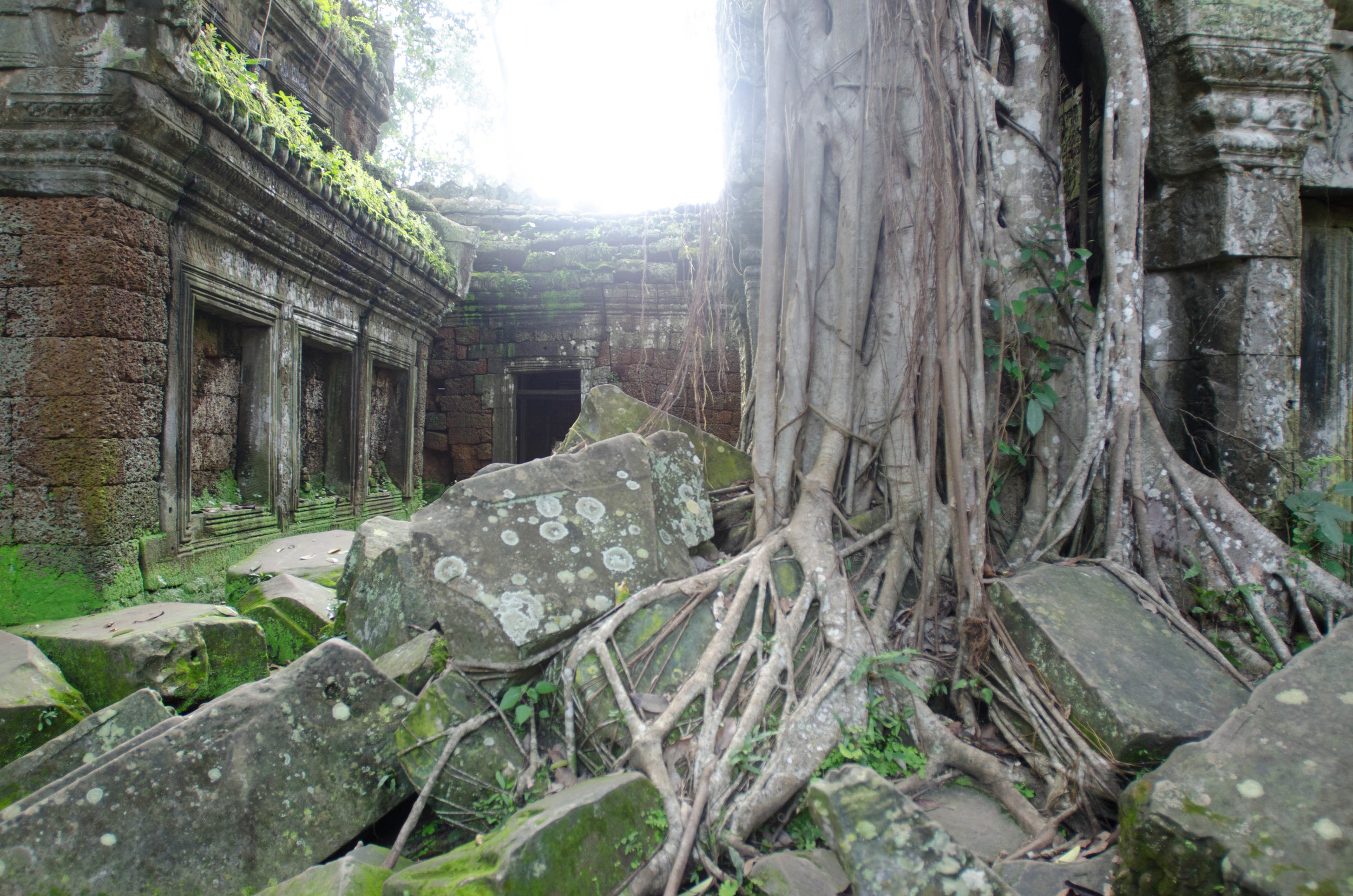
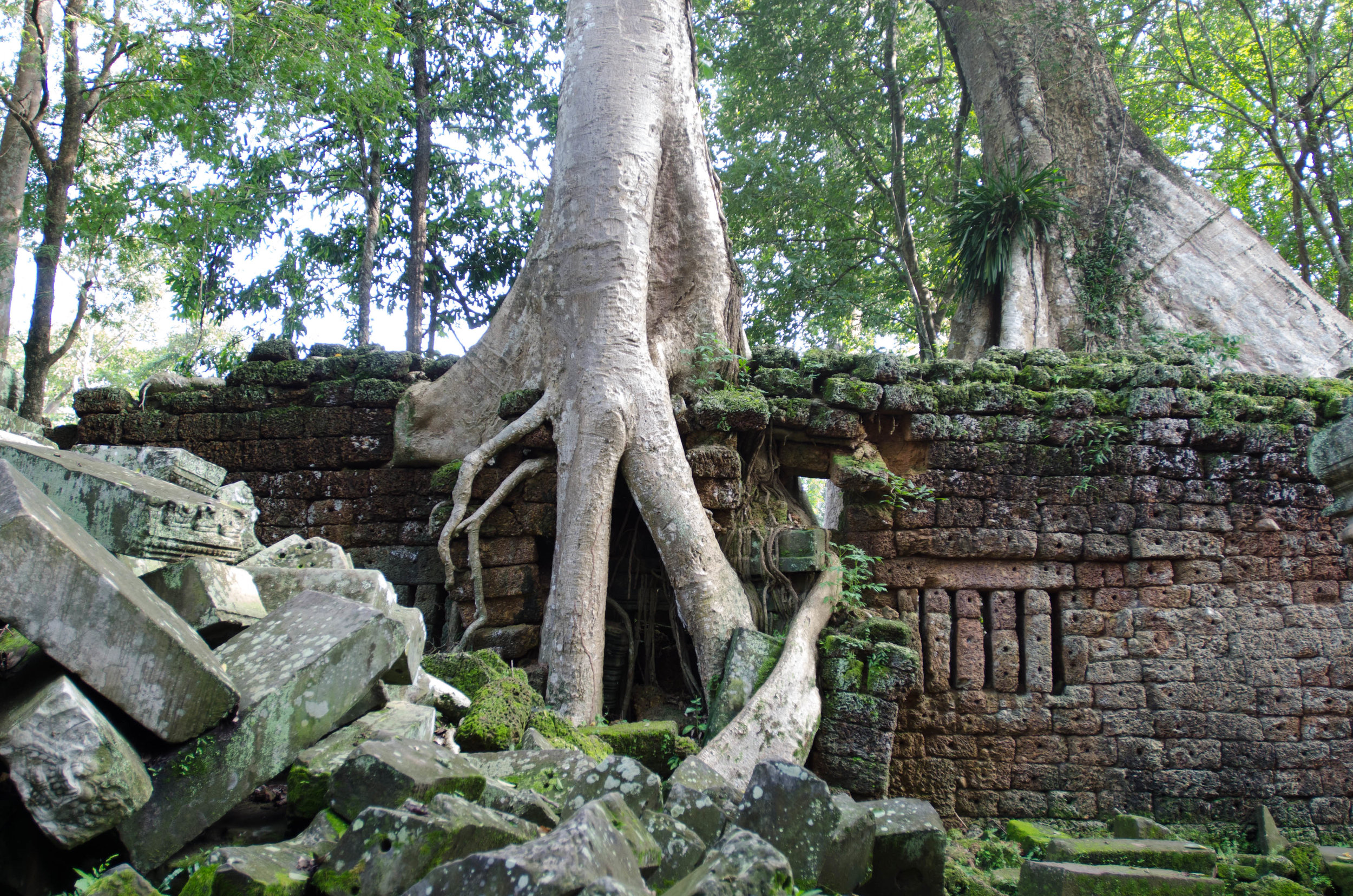
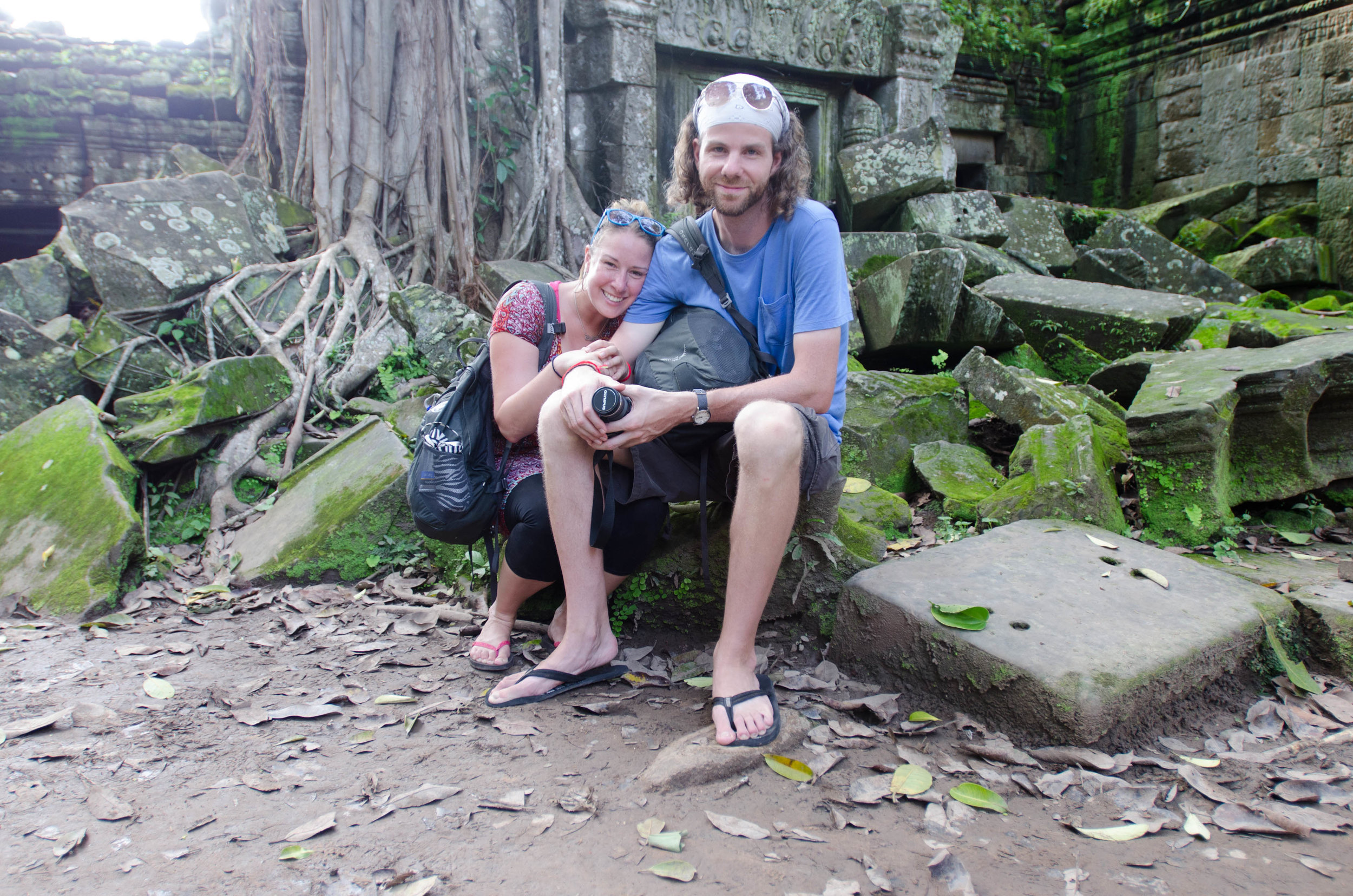
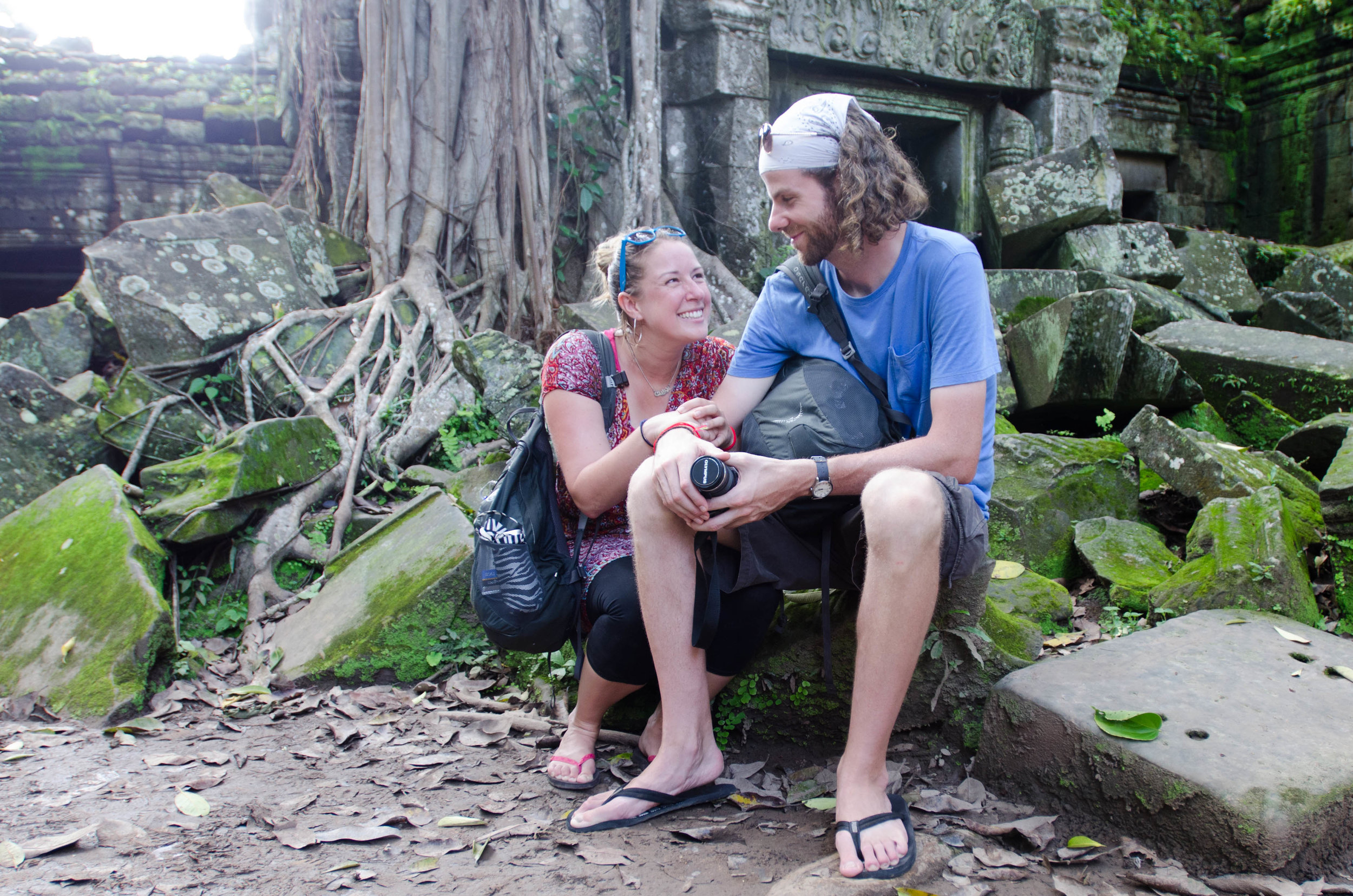
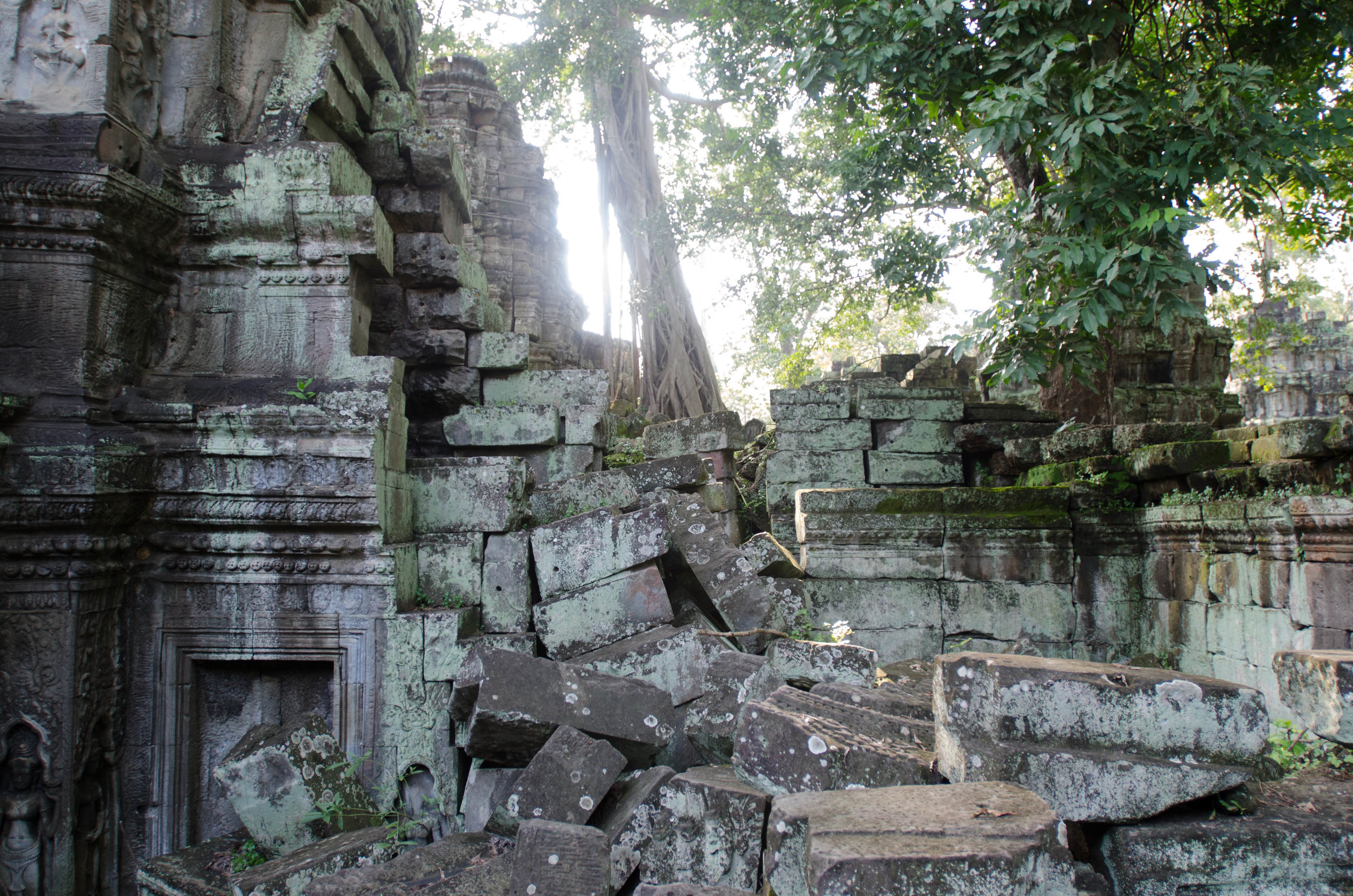

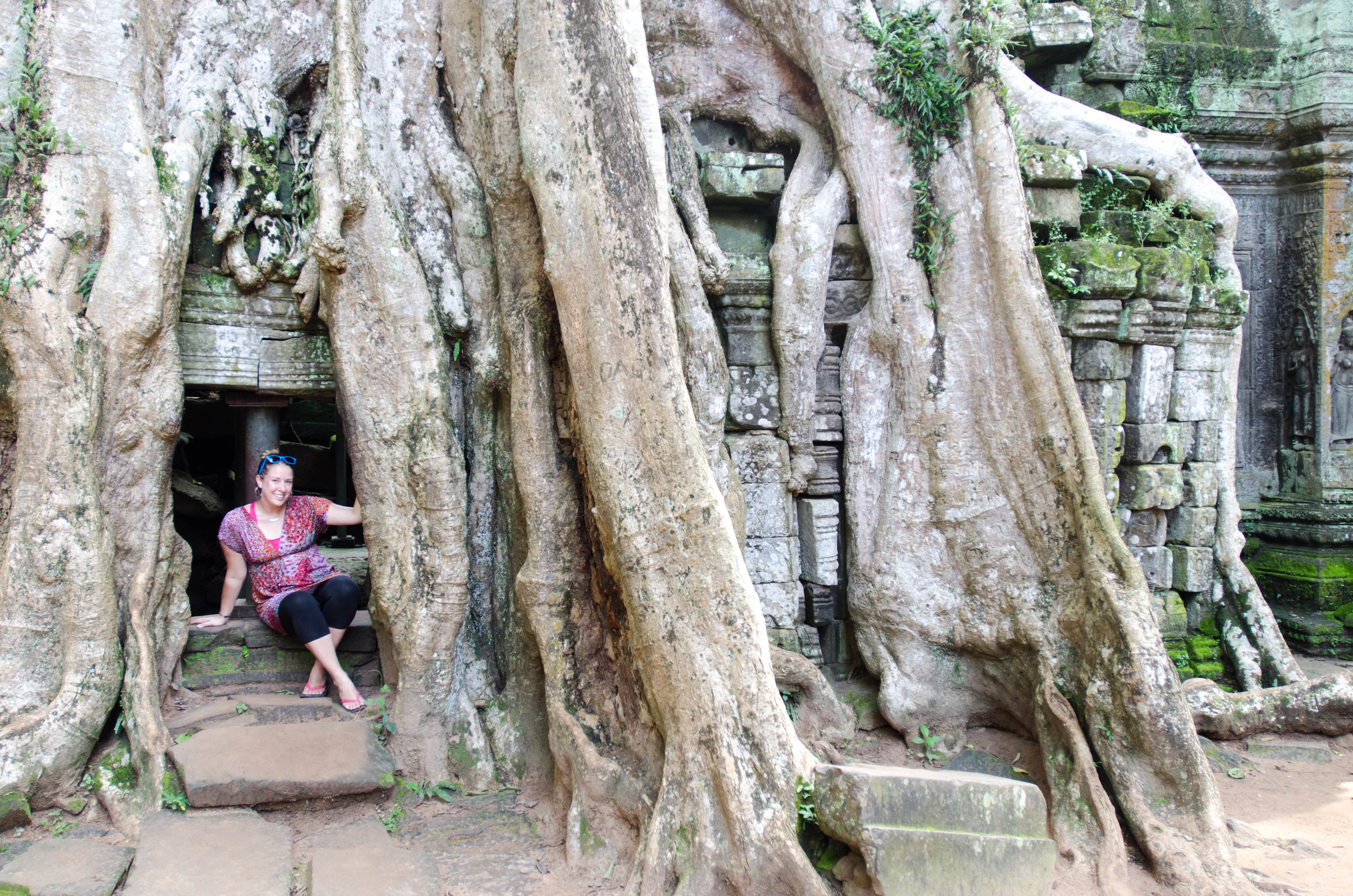


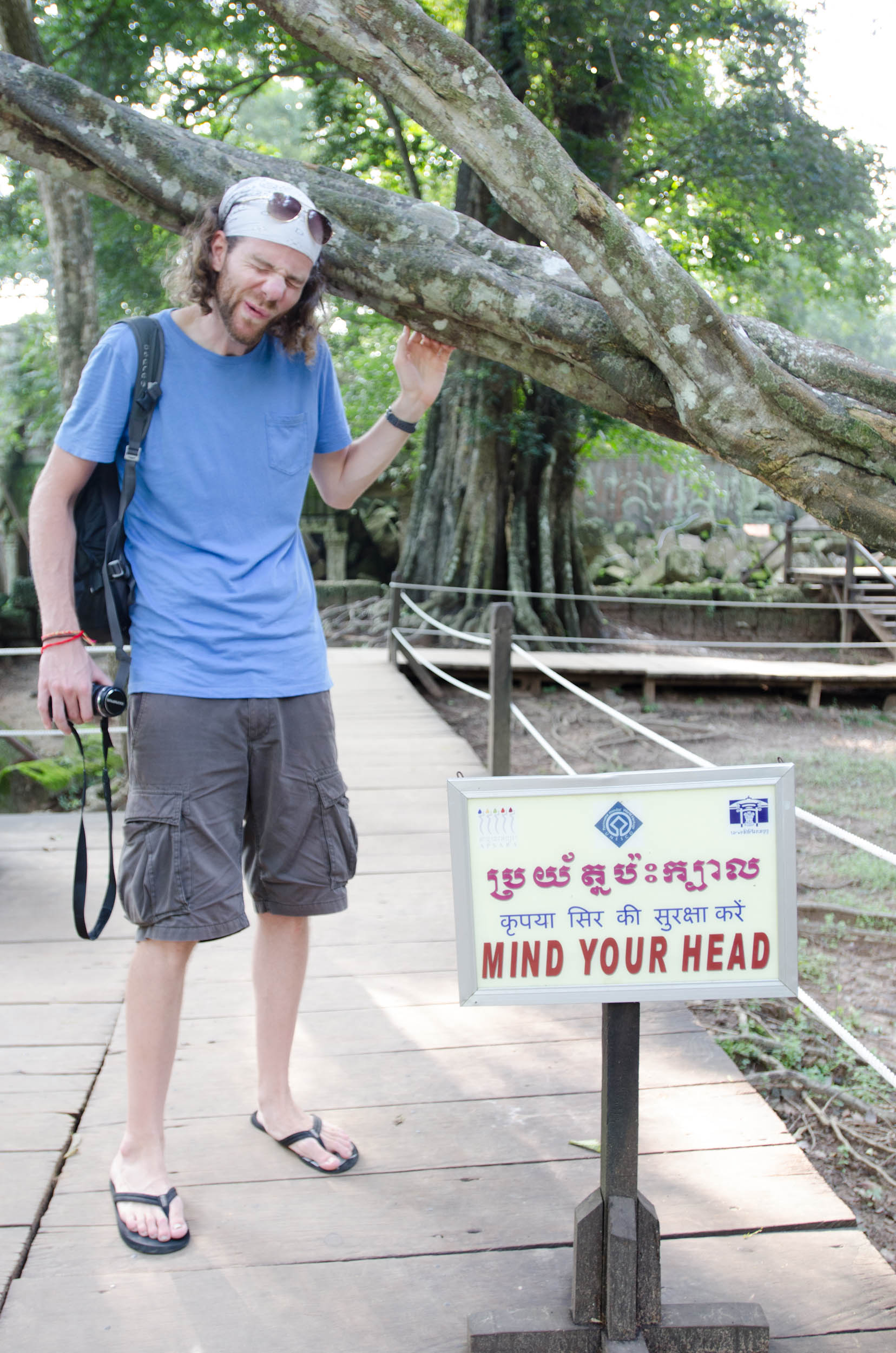
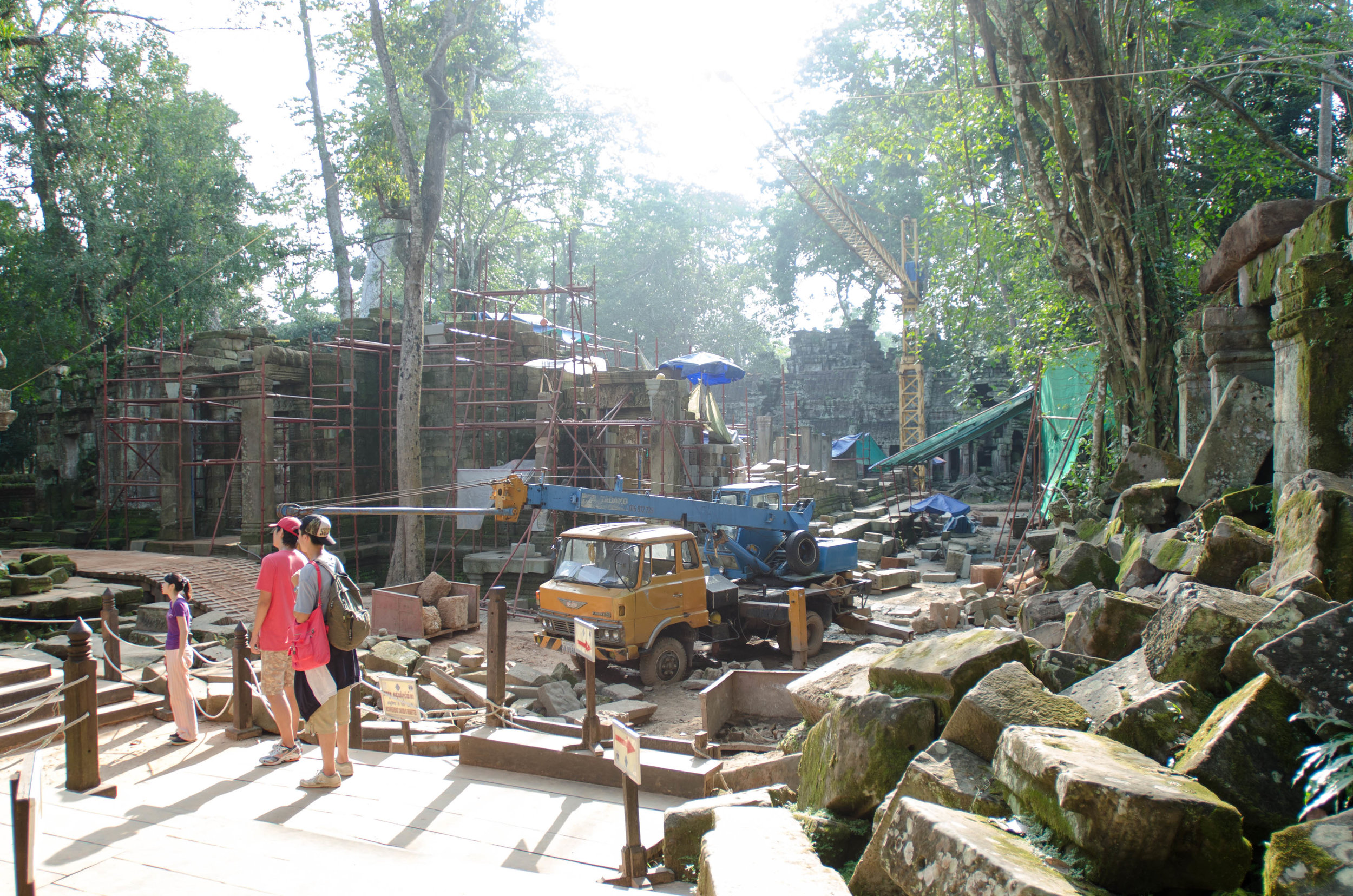

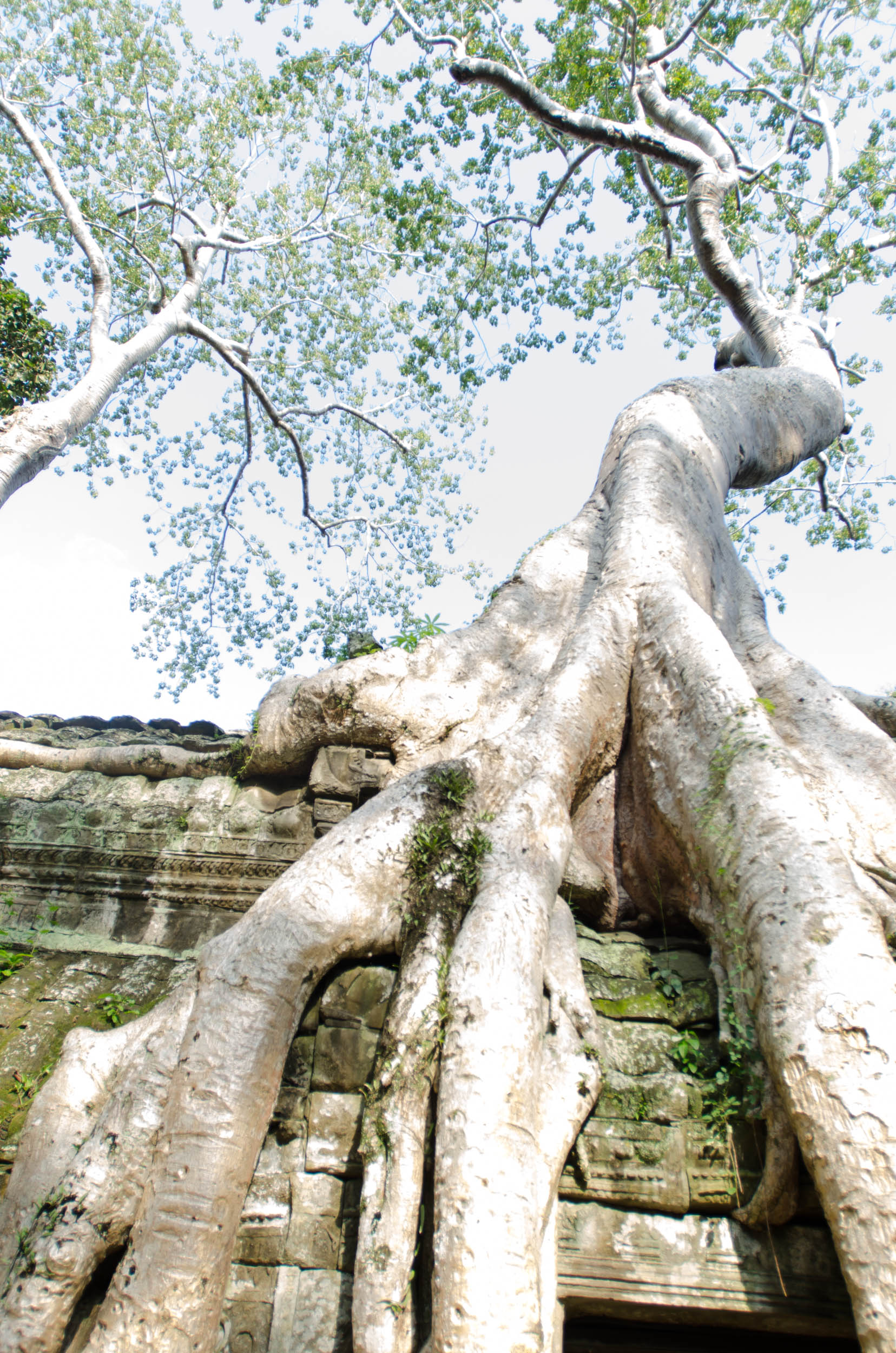

Hot and sticky, we walked past the Elephant Terrace, straight to our driver so we could have more time at Ta Prohm. I was immediately struck by how many vendors there were, how few children there were, and how much restoration has taken place in the last four years. In a way, approaching the temple was a bit unrecognizable as so many wooden walkways have been set up and SO MANY TOURISTS were there! When Jane and I went, maybe ten other people were there, and we were largely able to do what we wanted in the temple. We sat for awhile and listened to the birds (at least that hasn't changed!) and were barely interrupted by other visitors. This time around, large tour groups marched through. Wooden platforms were set up in front of trees for more "ideal" photo opportunities. And vendors were set up inside the temple!
Despite all of the changes (not necessarily for the better) we were still able to slip deeper into the temple where the tour groups seemed to skip over.
The same king who built Bayon, established Ta Prohm as a Buddhist monastery and university, so it seemed fitting that I was able to sneak a shot of two monks sitting outside of the temple on our way out the East entrance. I thought I was going a little crazy remembering it in such a different state, but it turns out that in 2010, India began restoring the temple by clearing out bushes and shrubbery and building the (hideous) wooden walkways and platforms that totally take away from the jungle temple experience I had four years ago. It's still my favorite. I just hope India chills with the restoration efforts so Ta Prohm doesn't lose anymore of it's charm.

